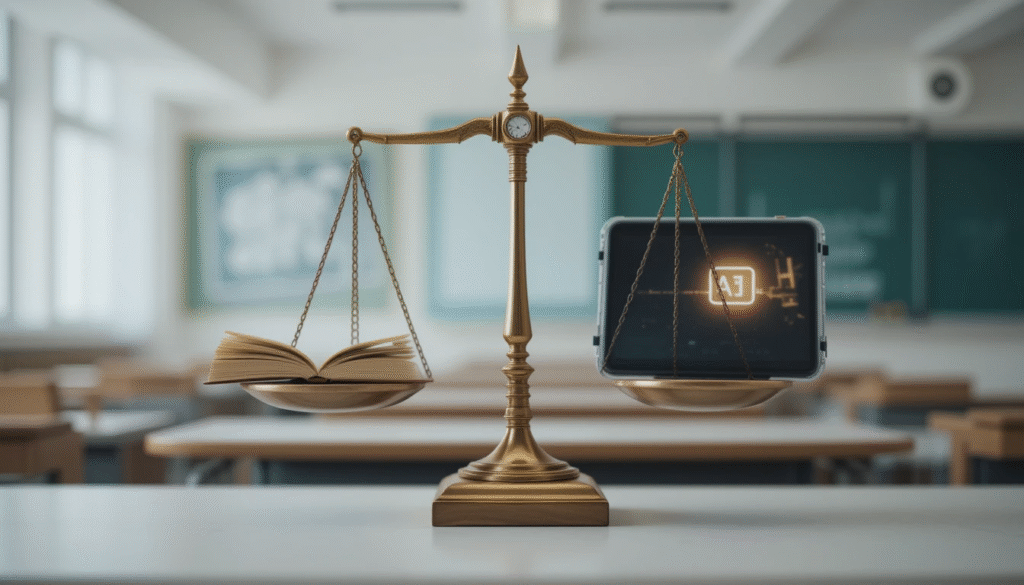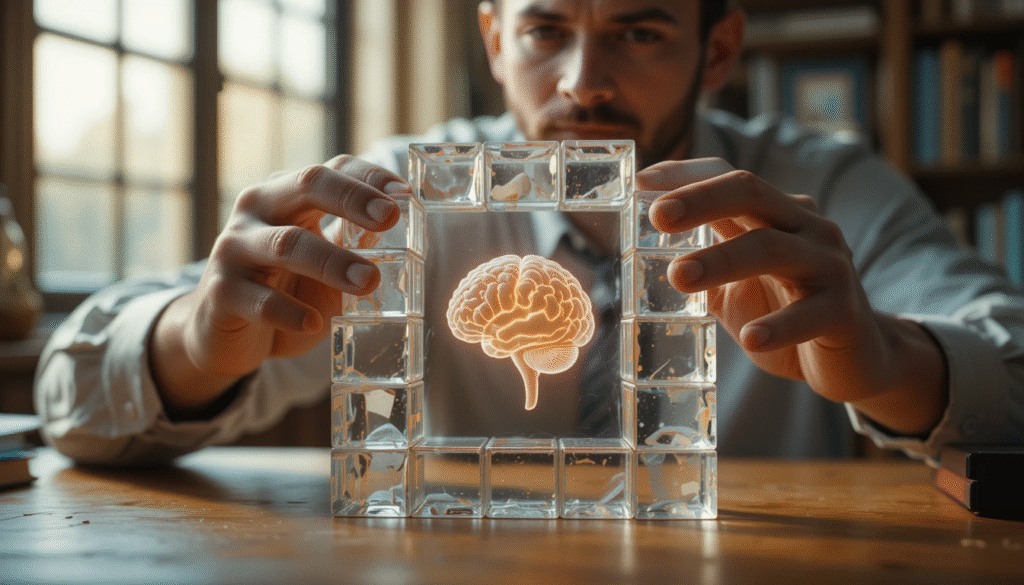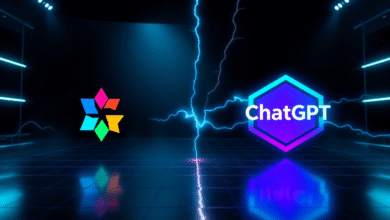
The rapid explosion of Artificial Intelligence into our classrooms has left many students, teachers, and parents feeling a mix of excitement and anxiety. Tools like ChatGPT are incredibly powerful, but with that power comes a flood of new, complex questions. How do we stop cheating? Is student data safe? Are these tools even fair? To navigate this new landscape, we need a clear set of rules. This is where Ethical AI Guidelines in Education become the single most important topic for modern schools.

Think of these guidelines not as restrictive barriers designed to stop progress, but as the essential guardrails that keep everyone safe on a new and unfamiliar road. They are the shared understanding that allows us to harness the immense benefits of AI without falling victim to its potential pitfalls. For anyone involved in education today, a deep understanding of the core Ethical AI Guidelines in Education isn’t just a good idea it is a fundamental necessity for responsible innovation.
This guide will serve as your simple, no-jargon map. We will break down exactly what these guidelines are, why they are so critical right now, and provide practical, real-world examples of how to apply them, ensuring that AI is used to elevate learning, not undermine it.
Why Do We Even Need Specific Guidelines for AI in Education?
The need for Ethical AI Guidelines in Education stems from the unique nature of the school environment. Unlike using AI for marketing or entertainment, using it with students involves a profound duty of care. The stakes are incredibly high, as these tools have the potential to shape a young person’s knowledge, worldview, and future opportunities.
The core motivation is to create a framework that protects students while empowering teachers. Without clear principles, schools risk a chaotic free-for-all where issues like widespread plagiarism, data breaches, and algorithmic bias can run rampant. By proactively establishing these rules, we ensure that the integration of AI is thoughtful, deliberate, and always puts the student’s best interests first. The entire purpose is to maintain human values at the center of an increasingly automated world.
The 5 Core Pillars of Ethical AI in Education
Most comprehensive policies on Ethical AI Guidelines in Education are built upon five foundational pillars. Understanding these five concepts is the key to understanding the entire ethical landscape of AI in the classroom.
Pillar 1: Transparency and Honesty
This is the bedrock principle. It simply means that we must be open and honest about when, how, and why AI is being used. For students, this means properly acknowledging when they have used an AI tool to help with brainstorming, outlining, or editing a practice often called “AI citing.” For schools, it means being transparent with parents and students about which AI platforms are being used in the classroom and for what purpose. It’s about eliminating secrecy and building trust.
Pillar 2: Fairness and Algorithmic Equity
An AI is only as unbiased as the data it was trained on. If the data reflects historical biases, the AI can perpetuate them. The fairness guideline demands that Ethical AI Guidelines in Education include measures to audit and test AI tools for bias. The goal is to ensure that the AI does not favor or disadvantage any group of students based on their background, language, or learning style, ensuring that technology promotes equity, not inequality.

Pillar 3: Student Privacy and Data Security
This is a non-negotiable legal and moral obligation. When a student interacts with an AI, they are creating a data trail. Who owns that data? Where is it stored? How is it being used? This pillar requires that schools only use AI platforms that are fully compliant with stringent student data privacy laws like FERPA in the US. It means having clear policies that protect a student’s personal information from being exploited or misused.
Pillar 4: Human Oversight and Final Judgment
This principle dictates that an AI should never be the ultimate decision-maker in a student’s education. An AI can suggest a grade, but a human teacher must review and approve it. An AI can recommend a learning path, but a human teacher must have the power to override it. This “human-in-the-loop” approach ensures that context, empathy, and professional judgment qualities AI lacks always have the final say. Following this part of the Ethical AI Guidelines in Education keeps technology in its proper role as a tool, not a replacement.
Pillar 5: Accountability and Responsibility
If an AI gives a student factually incorrect information that harms their grade, who is at fault? If an AI tool has a data breach, who is responsible? The accountability pillar establishes a clear chain of responsibility. It means schools must have procedures in place for addressing AI errors, and technology companies must be held accountable for the performance and security of their products. It’s about ensuring there’s a plan when things inevitably go wrong.
The Pillars of Responsible AI
A balanced approach is key to ethical implementation.
Putting Theory into Practice: A Real-World Scenario
Let’s see how these Ethical AI Guidelines in Education apply in a real-world scenario.
Scenario: A high school history teacher wants to use an AI tool to help students prepare for an exam.
- Transparency: The teacher clearly informs the class and parents that they will be using the “QuizBot AI” platform. The syllabus states that students are encouraged to use the AI for practice but must disclose if they used it for brainstorming essay ideas.
- Fairness: The school’s IT department has already vetted QuizBot AI to ensure its question bank doesn’t contain cultural or linguistic biases.
- Privacy: QuizBot AI has a clear, FERPA-compliant privacy policy, and the school has a data-sharing agreement in place. Student data is anonymized wherever possible.
- Human Oversight: While the AI generates and auto-grades the practice quizzes, the teacher reviews the analytics dashboard to identify concepts the whole class is struggling with. He uses this insight to reteach the topic the next day.
- Accountability: The teacher finds that the AI incorrectly graded a valid answer from a student. He uses the established procedure to report the error to QuizBot AI and manually overrides the grade, explaining the situation to the student.
This example shows how the guidelines work together to create a safe and effective learning experience.
The Future: Building a Culture of Responsible AI Use

The conversation around Ethical AI Guidelines in Education is quickly evolving. The end goal is not just to create a list of rules but to foster a deep and lasting culture of responsible digital citizenship. We don’t just teach students what the rules are; we teach them why they matter. This involves developing students’ critical thinking skills so they can analyze and question AI-generated content, not just passively accept it. The schools that succeed will be those that integrate AI ethics into their curriculum as a core skill, just like reading, writing, and arithmetic.
Conclusion
The integration of AI into our schools is an unstoppable force, and with it comes the profound responsibility to get it right. Ethical AI Guidelines in Education provide the essential framework for doing just that. They are the compass that helps us navigate the complexities of this new technology, ensuring that we prioritize student safety, fairness, and true intellectual growth above all else. By embracing these principles, we can move forward with confidence, using AI not as a shortcut, but as a powerful catalyst to build a more effective and equitable future for all learners.
Frequently Asked Questions
What is the most important ethical guideline for AI in schools?
While all are important, protecting student data privacy and ensuring human oversight (a teacher is always in control) are often considered the most critical starting points.
Is it unethical for a student to use ChatGPT for homework?
It’s unethical if they copy and paste the answer. It is ethical if they use it as a tool for brainstorming, understanding a topic, or getting feedback on their own original work.
How can a school create its own ethical AI guidelines?
A school should form a committee of teachers, administrators, parents, and even students to discuss the key principles like transparency, fairness, and privacy, then create a simple, clear policy.
What is “algorithmic bias” in an educational context?
It’s when an AI system shows unfair prejudice for or against a certain group of students, often because of biases present in the data it was trained on.
How does transparency apply to students?
For students, transparency means being honest about their process. They should cite AI as a tool if they used it for significant help with brainstorming or structuring their work.
Who is responsible if an AI provides a student with wrong information?
This falls under accountability. Ultimately, the student is responsible for fact-checking their work, which is why teaching critical evaluation of AI output is a key part of the guidelines.
Why is “human oversight” so important?
Because AI lacks common sense, empathy, and understanding of a student’s personal context. A human teacher must always be the final decision-maker in a student’s education.
Do these guidelines mean I shouldn’t use AI?
Not at all. These guidelines are not meant to stop you from using AI. They are meant to help you use it effectively, responsibly, and safely for powerful learning.




